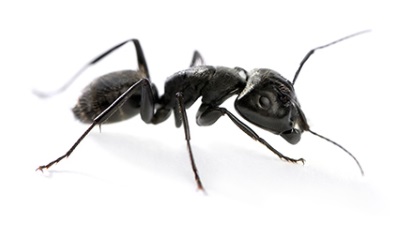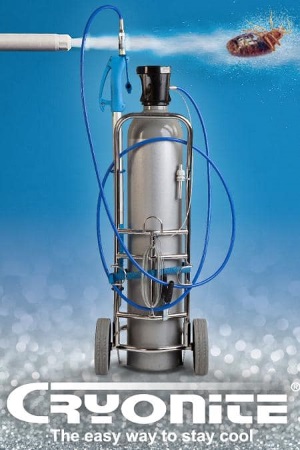All about Pest Control Chicago
All about Pest Control Chicago
Blog Article
Things about Pest Control Chicago
Table of ContentsThe Best Strategy To Use For Pest Control ChicagoFascination About Pest Control ChicagoThe Facts About Pest Control Chicago UncoveredThe smart Trick of Pest Control Chicago That Nobody is Talking AboutMore About Pest Control ChicagoSome Of Pest Control Chicago
Planting or gathering a crop before (or after) a parasite exists lowers bug damage by evasion. Trapping and computing an insect's growing level days can help with preparing around an insect's lifecycle. Damages tolerance can often be achieved by growing a plant early so that the plants are stronger, extra resistant, and more tolerant to damage by the time insect parasites exist.
By creating a little, regulated room that the bugs prefer, it is feasible to divert bugs away from the key crop. 2 techniques for this are catch cropping and strip harvesting. is growing a preferred host plant of an insect pest near the primary crop that is to be shielded.
If necessary, the parasites can then be killed in the trap crop. Trap plants can be any type of types that the parasite preferseven be the same species as the primary plant - Eco-friendly pest control Chicago. If the catch plant is the exact same species as the primary plant, it needs to be grown at once that will best tempt the bug far from the primary crop
Little Known Facts About Pest Control Chicago.
 This method is useful when collecting a catch plant since it maintains some environment for the insect. Consequently, the parasite does not relocate to find new habitat in an adjacent greater worth or more susceptible crop. https://www.openstreetmap.org/user/pstc0ntrlchg. The techniques already stated emphasis on decreasing plant direct exposure to insect parasites, yet it is additionally possible to reduce yield loss also when insect damage happens
This method is useful when collecting a catch plant since it maintains some environment for the insect. Consequently, the parasite does not relocate to find new habitat in an adjacent greater worth or more susceptible crop. https://www.openstreetmap.org/user/pstc0ntrlchg. The techniques already stated emphasis on decreasing plant direct exposure to insect parasites, yet it is additionally possible to reduce yield loss also when insect damage happensPlant them appropriately and maintain the plants healthy and balanced by carefully watering, fertilizing, and pruning them. If a bug or condition triggers unacceptable damages in spite of preventative initiatives, select an effective monitoring method that will have the least amount of impact on various other living animals and the setting.
The Only Guide for Pest Control Chicago
 Search for signs the plant exhibits as an outcome of parasite task. Analyze your plants usually. Recognize your plants to be certain that the twisted leaves, uncommon coloration, or strange-looking frameworks you see are not a regular component of the plant. Try to rule out site-related troubles by ensuring that the soil kind, water drainage conditions, fertility level, and other environmental problems are beneficial for the plant.
Search for signs the plant exhibits as an outcome of parasite task. Analyze your plants usually. Recognize your plants to be certain that the twisted leaves, uncommon coloration, or strange-looking frameworks you see are not a regular component of the plant. Try to rule out site-related troubles by ensuring that the soil kind, water drainage conditions, fertility level, and other environmental problems are beneficial for the plant.Pests and mites typically are related to particular plants, and they comply with particular advancement and behavior patterns as the season proceeds. Usage referral publications from the library or yard facility to recognize insects. If you can't discover an exact description there, get in touch with someone in your neighborhood extension workplace. Learn about the bug's life process, behavior, and all-natural enemies.
If so, an application of a nonselective pesticide could eliminate them, permitting the pest population to rebound uninhibited by killers and parasites, which may have been supplying considerable control. If a control is needed, consider physical or biorational techniques. If they are inaccessible or impractical, you may require to very carefully utilize a conventional chemical control.
A Biased View of Pest Control Chicago
 Some aphids and mites can be knocked off by splashing the plant with water. You can utilize catches to capture specific bugs, and obstacles to secure plants from insect assault or condition infection.
Some aphids and mites can be knocked off by splashing the plant with water. You can utilize catches to capture specific bugs, and obstacles to secure plants from insect assault or condition infection.In some cases, the best service might be literally getting rid of the plant and changing it with one that will certainly not be affected by the pest or condition. The initial group includes living microorganisms that can kill the insect.
An instance of an approach that utilizes a naturally occurring biochemical is the microorganism Bacillus thuringiensis (Bt). Bt contains a healthy protein that is harmful to details insects, yet safe to various other organisms.
The Of Pest Control Chicago
When the delicate bug pest feeds on the splashed fallen leaves, it will ingest the protein and be killed. Standard chemicals are used just as a last resort in an IPM program, but often are one of the most efficient ways of control. To have the best impact, these materials need to be applied on a particular part of the plant when the parasite is most at risk.
Oftentimes, environmentally secure chemicals such as horticultural oil or insecticidal soap work options - https://www.ted.com/profiles/47839279. Once again, applications must be timed carefully to have the best effect on the parasite insect populace. Since they have no residual activity after they have dried out, soaps and oils are typically the option that is the least turbulent to populaces of helpful organisms
These words, from the very least poisonous to most harmful are: "caution," "caution," and "threat." Use these words as standards to help you choose the least hazardous material amongst the efficient choices. For the majority of landscape bugs, you need to consider pesticides in just the first two categories. Some chemical formulas can be used just by applicators with special training and who are accredited by the this page state's department of agriculture.
An Unbiased View of Pest Control Chicago
Refer to the Woody Ornamental Bug, Mite, and Condition Administration Guide, released by Penn State Expansion, or to an additional existing recommendation for a checklist of materials that are signed up for usage on plants in your state. Review the tag to be certain that you have actually selected a product that is reliable against the pest you have recognized, and choose your timing based upon professional referrals.
Report this page